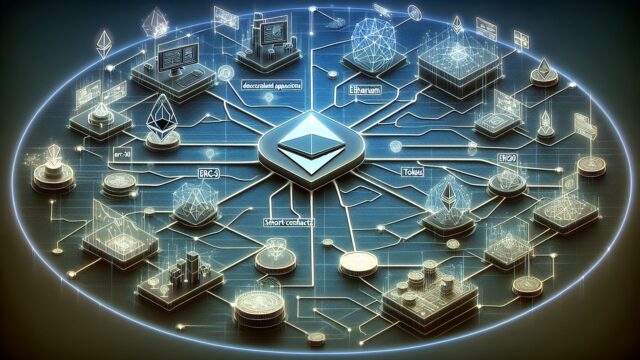Web3 has become synonymous with the next evolution of the internet – an internet where users have full control over their data, privacy, and financial transactions. The foundation of the web3 movement is built upon various protocols that enable decentralized applications (dApps) to function. This article will focus on Ethereum, arguably the most significant web3 protocol, examining its role in nurturing the development of a decentralized online ecosystem.
Introduction
When discussing web3, it would be remiss not to start with Ethereum – a platform that has revolutionized the way developers approach blockchain and the creation of decentralized services. As the second-largest cryptocurrency by market capitalization, Ethereum’s influence extends far beyond its monetary value. It has become the launching pad for a plethora of innovative projects that define the web3 space today.
Body
The Genesis of Ethereum
Ethereum was proposed in late 2013 by a programmer named Vitalik Buterin. Frustrated by the limitations of Bitcoin’s blockchain, which was designed primarily for peer-to-peer money transfers, Buterin envisioned a more versatile environment where developers could create their programs. Ethereum was thus born to serve as a platform for smart contracts – self-executing contracts with the terms of the agreement directly written into code.
How Ethereum Works
At the heart of Ethereum is its blockchain – a decentralized ledger that records all transactions made on its network. What sets Ethereum apart is its integration of smart contracts, which are autonomous, programmable applications that run exactly as programmed without any possibility of downtime, censorship, fraud, or third-party interference.
These smart contracts are the building blocks for dApps and even more intricate systems known as Decentralized Autonomous Organizations (DAOs). They all operate on the Ethereum Virtual Machine (EVM), which can be thought of as a global, decentralized supercomputer made up of all the computers running Ethereum nodes.
Ether – The Fuel for Ethereum
To execute smart contracts and run dApps, Ethereum uses its native currency, Ether (ETH). Every operation on Ethereum requires computational resources, and users must pay a fee, known as “gas,” to compensate for the computational energy required to process and validate transactions. Gas ensures that the network isn’t clogged with unnecessary operations and helps to secure it against spam attacks.
Ethereum’s Transition to Proof of Stake
Originally, Ethereum used a consensus mechanism called Proof of Work (PoW), much like Bitcoin, to validate transactions and create new blocks. However, PoW is energy-intensive and has raised concerns about sustainability. As a response, the Ethereum community is moving toward a different consensus mechanism called Proof of Stake (PoS) through an upgrade called “Ethereum 2.0.”
With PoS, validators stake their ETH as collateral to validate transactions and create new blocks. This shift is expected to drastically increase Ethereum’s transaction throughput, reduce fees, and minimize the protocol’s carbon footprint, further solidifying Ethereum’s position as a frontrunner of the web3 evolution.
The Token Economy on Ethereum
Ethereum’s token standard, ERC-20, has been essential in the proliferation of tokens within the web3 space. These tokens can represent a variety of digital assets, such as currency, shares, proof of ownership, or even voting rights. The ICO (Initial Coin Offering) boom of 2017 and the more recent DeFi (Decentralized Finance) explosion owe their existence to the flexibility of the ERC-20 standard and Ethereum’s capabilities.
Challenges and the Future of Ethereum
Despite its potential, Ethereum faces challenges, including scalability, high transaction fees during peak usage, and network congestion. The impending full transition to Ethereum 2.0 promises to address many of these issues. Furthermore, the protocol’s developer community continuously works on layer 2 scaling solutions, such as rollups and sidechains, to improve the network’s performance.
Conclusion
Ethereum has undeniably paved the way for the web3 revolution, providing a robust platform for the development and deployment of decentralized services. Its smart contracts have allowed for unprecedented levels of automation, transparency, and security in digital agreements, while the advent of dApps has challenged traditional business models. As Ethereum evolves with Ethereum 2.0, it remains at the vanguard of blockchain technology, promising a more secure, efficient, and sustainable foundation for the ever-expanding universe of web3 applications. Whether you’re a developer, an investor, or merely a curious onlooker, Ethereum’s role in the evolution of the internet is one to follow closely as it continues to shape the future of online interaction and transaction.

